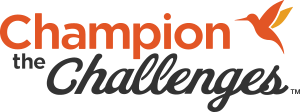
Before, During and After a Stroke – The Moving Parts
Globally, 1 in 4 adults over the age of 25 will have a stroke in their lifetime. With shocking probabilities like this, it’s incredibly important for all adults to understand the warning signs and recovery process involved with a stroke.
Prevention is just as important as learning the warning signs. Adults should regularly monitor blood pressure and cholesterol levels, aim to keep blood sugar down, stay active daily and maintain a healthy weight, strive for a balanced diet with sufficient nutrient intake, get 7-8 hours of sleep each night, avoid tobacco and harmful use of alcohol, and of course, have regular doctor check-ups. Taking these actions will give adults the best chance of staying low-risk.
Unfortunately, these risk aversion actions are not foolproof and it can still be possible to be affected by a stroke even with close attention to health. Adults may be having a stroke if some particular signs are present, such as the drooping of one side of the face or facial numbness, slurred speech, weak arms or lack of ability to move arms, sudden numbness, or difficulties walking, confusion, or sudden severe headache. If any of these signs are noticed, it is advised to contact 911 immediately for medical attention.
For those who have experienced a stroke, it is important to listen to therapists and doctors, however, adults must also push to explore every type of therapy offered. Patients should be safe, but be aggressive with therapy as the rate of recovery truly depends on it. Traditional OT, PT, and Speech therapy are critical, but one should also explore alternative therapies as they can help if combined with the traditional rehabilitation program. Some suggestions include aquatic therapy, aphasia software and signing therapy, dance, hyperbaric oxygen therapy (HBOT), neuro acupuncture, acupressure, and healthcare virtual reality.
The recovery process can be long and painful – it is by no means an easy undertaking for patients, and for that matter, for the patient’s support circle as well. Between the exhausting physical and mental work required and the time commitment of the process, recovery is an all-encompassing priority for stroke survivors. One of the most crucial recovery efforts is to remain encouraged – the work put in is well worth the results that patients will see.
Patients are encouraged to set weekly, monthly, and yearly goals to track their improvement. In these goals, patients should take photos and videos to share with family, friends, doctors, and therapists to celebrate achievements along the way and track changes in performance. A stroke survivor’s education never ends and it is critical to stay informed and ask doctors questions to make sure they are getting attention to the right concerns. Most importantly, patients should remember the three P’s in recovery – Be Patient, Stay Positive and help the survivor Practice so they improve.
Stroke patients are not alone. Family, friends, and colleagues all play a critical role in the survivor’s rehabilitation journey. Aside from the patient’s support circle, the stroke community is a large and supportive group of patients, therapists, doctors, mentors, and family and friends of stroke survivors. Friendly chat groups and support groups are available to lend the emotional support many patients are looking for during their journey.
With strokes affecting as many adults as it unfortunately does, it is important that as a community we lend a shoulder of support for stroke survivors, their families, and doctors and therapists, to lean on for the emotional and physical support of our stroke survivors. But most of all, we remain educated on stroke signs and recovery efforts, so that as a community, we can play a more active role in overcoming stroke challenges.
